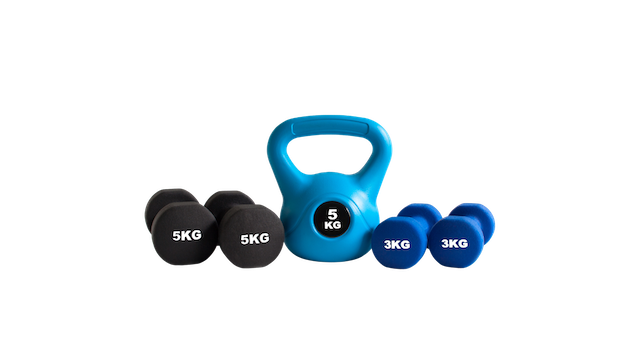Physio Hub:
Evidence-Based Article
Heavy Lifting for Teens
~ Separating Growth Myths from Facts ~

< Key Points >
- Supervised and Properly Executed Weightlifting is Safe for Teens: Weightlifting can be beneficial and safe when performed under supervision with correct techniques.
- Weightlifting Enhances Bone Health and Physical Fitness in Adolescents: Regular weightlifting improves bone density, reduces injury risks, and boosts overall physical fitness and self-esteem among teenagers.
- Readiness for Weightlifting is Determined by Biological and Emotional Maturity, Not Just Age: Assessing a child’s readiness for weightlifting involves more than age, incorporating biological and emotional maturity markers such as Tanner stages.
There are certain assumptions regarding children’s health that appear to pass down through the generations. A common misconception is that strength training and weightlifting should be avoided by children and teenagers because they may strain or damage their bone growth plates, which could result in restricted growth when they are 11, 13, or even 15. On the other hand, no data or research supports this. You might be shocked to hear that, when done properly and safely, lifting weights can have a positive impact on your growing teen’s body and health, much like many other forms of physical activity. Given that safety measures are taken, the advantages of weightlifting for teens — even those as young as 8 or 15 — certainly exceed the hazards. Get to know more about the benefits of weight training for children and teenagers in this article.
Good and Bad Sides: What Happens When Teens Lift Heavy Weights?
Science experts clear all myths about heavy lifting in teenagers. If you do weightlifting in a proper way, it can in fact strengthen your body and bones. According to Pierce (2021), there are risks of musculoskeletal injuries when done improperly, such as fractures and split intervertebral discs, but if weightlifting is done under supervision and is age-appropriate, the injury rates are very low. Faigenbaum (2008) further put emphasis on the importance of well-designed and managed resistance training programs for teens’ weightlifting so there is no mishap. If you’re a teenager or a parent to a teenager, you just need proper knowledge on how to lift weight properly and how much weight a teenager can bear. Some most common benefits of weightlifting include:
- Increase in bone strength index (BSI) and overall strength
- Decrease in sport-related injuries and low fracture risk
- Increase in physical fitness and self-esteem
Growth facts: Does Weightlifting Alters Teens’ Growth Patterns?
There is scientific proof of the positive effects of weightlifting on bone health and mass. According to Lima (2001), weightlifting poses a positive influence on mass of bone in male adolescents. However, some other science experts also say that excessive weightlifting can stop bone growth and stunt growth. But if you lift weight in a proper way, your body will release more growth indicators like serum osteocalcin. If weightlifting is done right, you can expect better bone growth and bone mass. French (2000) explains that calcium supplementation and weightlifting both show positive effects on increase in bone mass in adults and children.
How to Know if You’re Old Enough to Lift Weights
Deciding when a child should start weightlifting involves considering both their physical and emotional readiness, with a focus on their long-term development in sports. Recent research, like Byrd et al’s study, emphasizes the importance of evidence-based practices and using Tanner Stages to assess if a child is ready for weightlifting.
Biological and Emotional Readiness:
Kids can start formal weightlifting as early as 10 to 11 years, but it’s not just about age. We need to look at Tanner stages, which include things like breast development (girls) and pubic hair growth (for both girls and boys). This helps us get a better idea of a child’s biological and emotional readiness for weightlifting, going beyond just their age.
Tanner Stages as Indicators:
Tanner stages 1-5 are used to assess a child’s readiness to start weightlifting. During the tanner stages 1 to 2 the kids are in the early pubertal phase. Around tanner stage 4-5, the hormones start changing and this stage represents full maturity. Using Tanner stages helps coaches, parents, and athletes make informed decisions that prioritize a child’s long-term health and performance.



Long-Term Athlete Development (LTAD):
Byrd et al’s study shows us how a well-organized training program, including block exercises and evidence-based training methods, can lead to success for young athletes. Byrd et al conducted a study where they observed children over a period of 22 to 34 months during their training. These children participated in a prolonged weightlifting program, utilizing block periodization and incorporating evidence-based training principles. Many kids from the study did well in national and international competitions, and some even made it to multiple World Championships and the Olympics. This study highlights the effectiveness of a structured and long-term approach to training for young athletes.
The influence of heavy lifting on teenage growth has been a topic of great dispute, with the benefits of strength training being assessed against concerns. There is no inappropriate age to begin weightlifting as long as it is done safely, under supervision, and is satisfying for the person doing it. It’s important to consider a teen’s readiness for a weightlifting program on an individual level rather than only based on their age. Make sure that your kid is under the guidance of a licensed personal trainer, physical therapist, or other instructors who have experience creating weightlifting programs for children if they are interested in joining a strength training program. It takes time to become efficient with the bigger weights. It’s important to start out slowly and build up eventually when you’re young.
< Recommendation by Our Experts>
-
- Ensure Supervision: Always have young athletes train under the guidance of certified professionals to ensure safety and proper technique.
- Master the Basics: Focus on mastering form and technique before increasing weights to prevent injuries and improve effectiveness.
- Assess Maturity Levels: Use Tanner Stages to evaluate physical and emotional readiness for weightlifting, rather than relying solely on age.
< Reference >
- Pierce KC, Hornsby WG, Stone MH. Weightlifting for Children and Adolescents: A Narrative Review. Sports Health. 2022;14(1):45-56. doi:1177/19417381211056094
- Faigenbaum A, McFarland J. Relative Safety of Weightlifting Movements for Youth. Strength & Conditioning Journal. 2008;30(6):23-25. doi:1519/SSC.0b013e31817761c3
- Byrd R, Pierce K, Rielly L, Brady J. Young weightlifters’ performance across time. Sports Biomech. 2003;2:133-140.
- Stone MH, Hornsby WG, Haff GG, et al. Periodization and block periodization in sports: emphasis on strength-power training—a provocative and challenging narrative. J Strength Cond Res. 2021;35:2351-2371.
- Morris SJ, Oliver JL, Pedley JS, Haff GG, Lloyd RS. Taking a long-term approach to the development of weightlifting ability in young athletes. Strength Cond J. 2020;42:71-90.
- Pierce KC, Brewer C, Ramsey MW, et al. Youth resistance training. Prof Strength Cond J. 2008;10:9-23.
- Lima F, De Falco V, Baima J, Gilberto Carazzato J, R. Pereira RM. Effect of impact load and active load on bone metabolism and body composition of adolescent athletes: Medicine and Science in Sports and Exercise. 2001;33(8):1318-1323. doi:1097/00005768-200108000-00012
- Misra M. Bone density in the adolescent athlete. Rev Endocr Metab Disord. 2008;9(2):139-144. doi:1007/s11154-008-9077-1
- French SA, Fulkerson JA, Story M. Increasing Weight-Bearing Physical Activity and Calcium Intake for Bone Mass Growth in Children and Adolescents: A Review of Intervention Trials. Preventive Medicine. 2000;31(6):722-731. doi:1006/pmed.2000.0758
- Reich A, Jaffe N, Tong A, et al. Weight loading young chicks inhibits bone elongation and promotes growth plate ossification and vascularization. Journal of Applied Physiology. 2005;98(6):2381-2389. doi:1152/japplphysiol.01073.2004
- Karlsson MK, Vergnaud P, Delmas PD, Obrant KJ. Indicators of bone formation in weight lifters. Calcif Tissue Int. 1995;56(3):177-180. doi:1007/BF00298605
- Emmanuel M, Bokor BR. Tanner Stages. In: StatPearls. StatPearls Publishing; 2024. Accessed February 21, 2024. http://www.ncbi.nlm.nih.gov/books/NBK470280/



